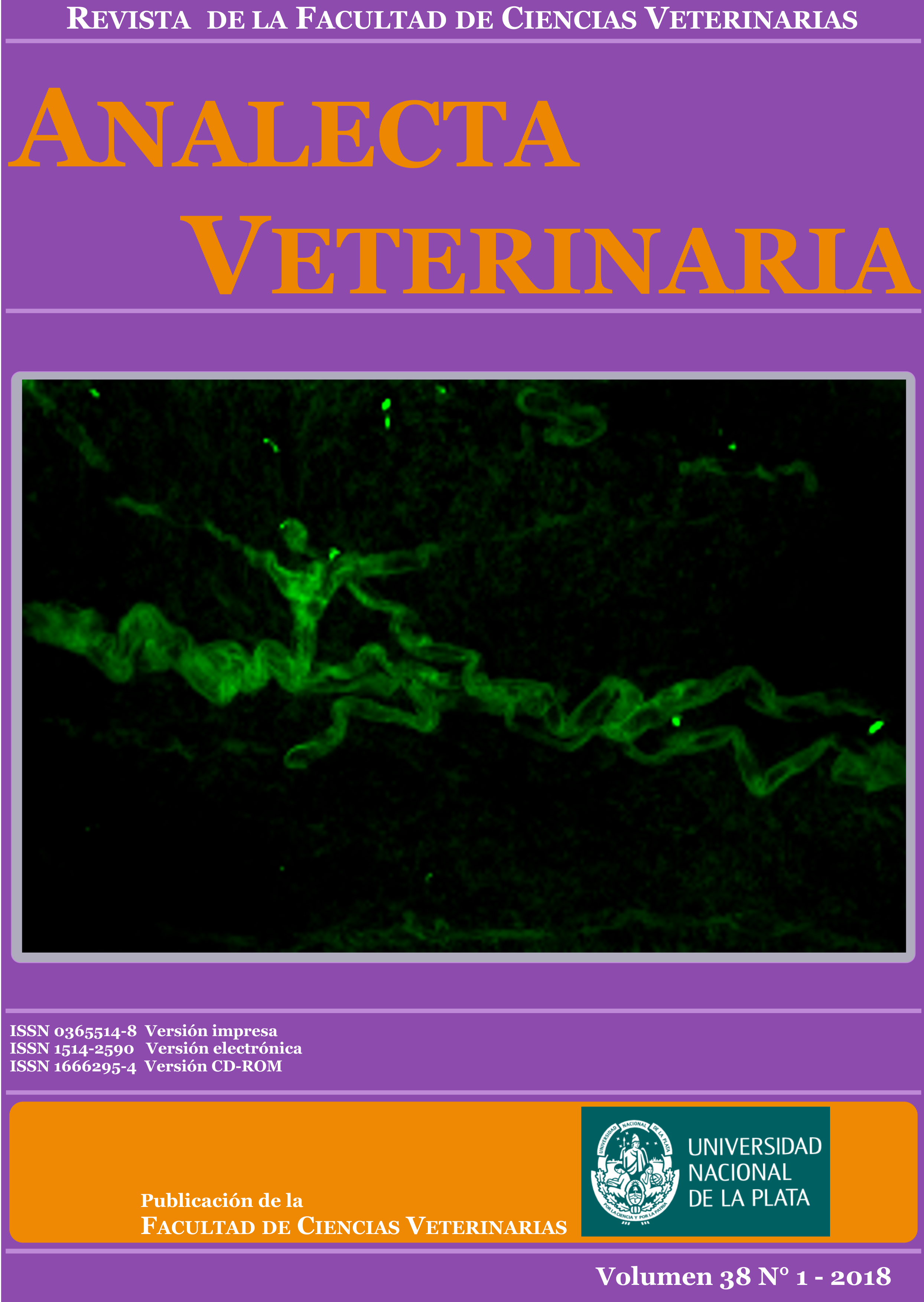Determination of the urine solutes concentration in dogs: osmometry versus urine density (refractometry and reactive strips) compared
DOI:
https://doi.org/10.24215/15142590e024Keywords:
osmometry, refractometry, reactive strips, urine, canineAbstract
Several methods are available for urinary solute concentration determination, such as osmometry (OSM) (reference method) and urine density (UD). UD can be determined by urinometry, refractometry (RF) and reactive strips (RS). In veterinary medicine, RF is the most commonly used method; however, the use of RS to determine UD is increasing in many diagnostic laboratories. The objectives of this investigation were to evaluate the accuracy of RF and RS on the UD determination of canine urine compared to the reference method, and to establish an analytical criterion for the DU estimation of the urine samples received in our laboratory. In this study, 35 urine samples from canine patients were analyzed. We compared the results obtained using three analytical methods: 1-Osmolality by the freezing point depression method, 2-UD by a clinical refractometer and 3-UD using commercial RS. The readings from the clinical refractometer showed an excellent correlation with the osmolality results, with a lineal tendency between both parameters. However, the correlation between UD estimated by RS and osmolality was very weak, showing lack of association between both methods. These results suggest that the RS could provide an approximate but not accurate UD value, and that RF is a more appropriate method in terms of cost, use in the field and accuracy for the assessment of UD in dogs.
Downloads
Metrics
References
Chadha V, Garg U, Alon US. 2001. Measurement of urinary concentration: a critical appraisal of methodologies. Pediatric Nephrology 16(4):37482. doi:10.1007/s004670000551
Dorner K, Campos R, Bornser S. 1984. Further evaluation of the SG test strip for estimation of urinary osmolality. Journal of Clinical Chemistry and Clinical Biochemistry 22(6):41925.
Dossin O, Germain C, Braun J. 2003. Comparison of the techniques of evaluation of urine dilution/concentration in the dog. Journal of Veterinary Medicine Series A Physiology Pathology Clinical Medicine 50(6):3225. doi: 10.1046/j.14390442.2003.00542.x
Pradella M, Dorizzi RM, Rigolin F. 1988. Relative density of urine: methods and clinical significance. CRC Critical Reviews in Clinical Laboratory Sciences 26(3):195242. doi:10.3109/10408368809105890
Sink CA, Weinstein NM. Chapter 3: Routine Urianalysis: Physical properties. En: Urine Practical Veterinary Urinalysis. 2012. West Sussex, UK: WileyBlackwell. pp. 2324.
Tdveten H. 2016. Urine protein total concentration in clinically normal dogs. Veterinary Clinical Pathology 45(3):3956. doi: 10.1111/vcp.12379
Trumel C, Diquélou A, Lefebvre H, Braun JP. 2004. Inaccuracy of routine creatinine measurement in canine urine. Veterinary Clinical Pathology 33(3):12832. doi: 10.1111/j.1939165X.2004.tb00361.x
Watson ADJ. 1998. Urine specific gravity in practice. Australian Veterinary Journal 76(6):3928. doi: 10.1111/j.17510813.1998.tb12384.x
Downloads
Published
How to Cite
Issue
Section
License
Authors retain the copyright and assign to the journal the right of the first publication, with the with the terms of the Creative Commons attribution license. This type of license allows other people to download the work and share it, as long as credit is granted for the authorship, but does not allow them to be changed in any way or used them commercially.

Analecta Veterinaria by School of Veterinary Sciences, National University of La Plata is distributed under a Creative Commons Attribution-NonCommercial-NoDeriv 4.0 International License.

























